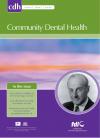Community Dental Health

- Cover Date:
- June 2007
- Print ISSN:
- 0265 539X
- Vol:
- 24
- Issue:
- 2
Reliability methodology in caries epidemiological studies conducted in the Nordic countries between 1990 and 2001
Objective To describe and analyse the reporting of methodology relating to reliability in caries epidemiological studies conducted in the Nordic countries between 1990 and 2001. Basic research design. Basic research design Literature searches were conducted in the Medline database, and reference lists of all obtained publications were scrutinised for additional studies. Publications fulï¬lling the inclusion criteria were assessed for study design, and methodological aspects relating to reliability were assessed according to recommendations for evidence-based medicine (EBM). The frequency of endorsement of the assessed items was analysed. Moreover, the type and strength of evidence was evaluated. Main outcome measures Reporting of predetermined methodological items relating to reliability and the frequency of endorsement of the assessed items were of primary interest. Results Initially, 724 publications were located in the literature searches. Of 133 eligible publications obtained, 32 fulï¬lled the inclusion criteria and remained throughout the analyses. The majority of the studies reported the reliability methodology, which was generally inadequate. The frequencies of endorsement ranged from 0% to 69 %. All publications contributed to a low strength of evidence. In this context, it was proposed that prospective longitudinal studies with a random sample selection be classiï¬ed as type-2 (2b) level of evidence. Conclusion There seems to be a need to improve the reporting and the methodology relating to reliability in caries epidemiological publications. Reporting of random sample selection and at least two of the items assessed seems to discriminate between high and low quality with respect to the reported methodology relating to reliability.
Key words: dental caries, dentistry, epidemiology, evidence-based medicine, public health, reliability, validity
- Article Price
- £15.00
- Institution Article Price
- £
- Page Start
- 97
- Page End
- 104
- Authors
- P. Sjögren, A. Halling
Articles from this issue
- Title
- Pg. Start
- Pg. End
- The cost-effectiveness of adding fluorides to milk-products distributed by the National Food Supplement Programme (PNAC) in rural areas of Chile
- 75
- 81
- Dietary patterns, toothbrushing habits and caries experience of schoolchildren in West Yorkshire, England.
- 82
- 87
- Prevalence and severity of dental caries in 5- and 12-year old children in the Veneto Region (Italy)
- 88
- 92
- Reliability methodology in caries epidemiological studies conducted in the Nordic countries between 1990 and 2001
- 97
- 104
- The reproducibility of the Denplan Oral Health Score (OHS®) in general dental practitioners
- 105
- 110
- Challenges associated with the evaluation of a dental health promotion programme in a deprived urban area
- 117
- 121
- Dental caries and associated factors among young male adults between 1999 and 2003 in Southern Brazil
- 122
- 127
